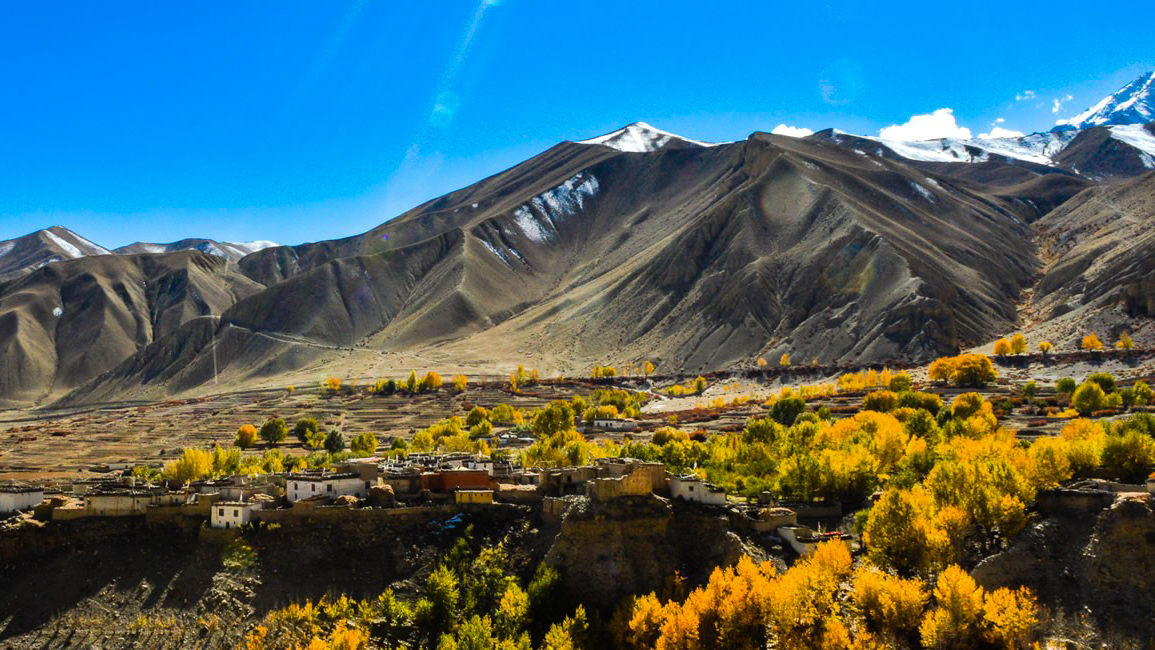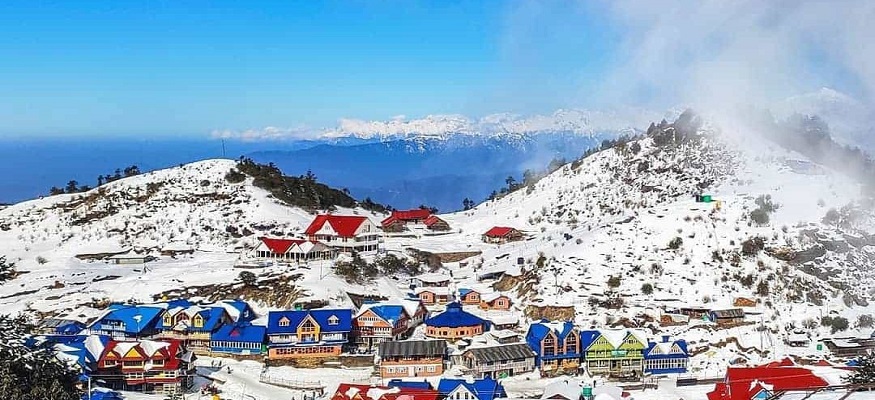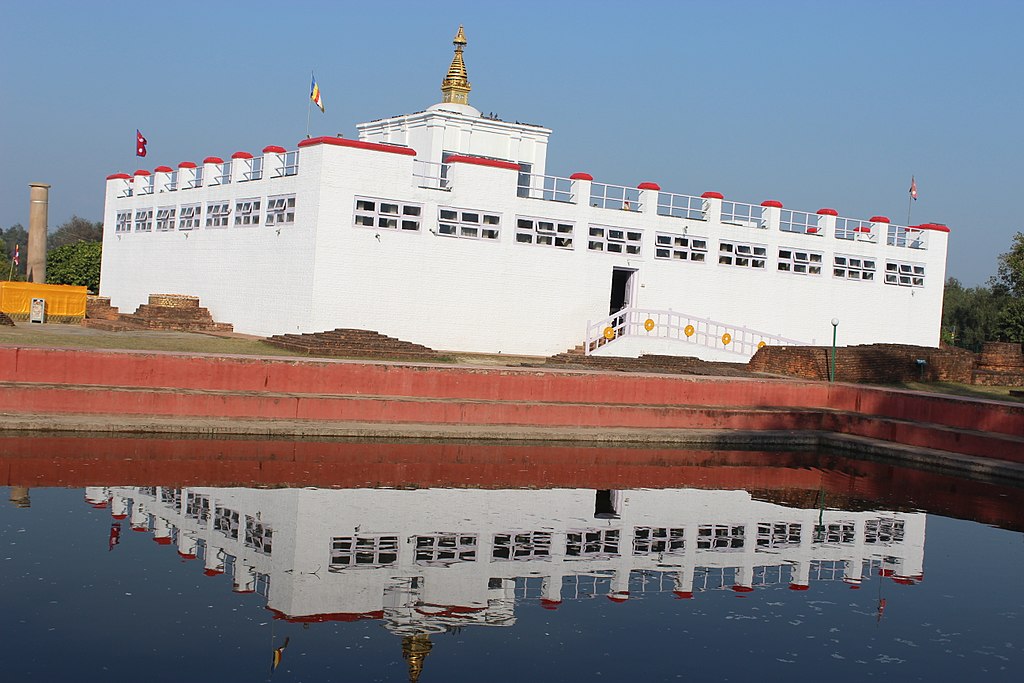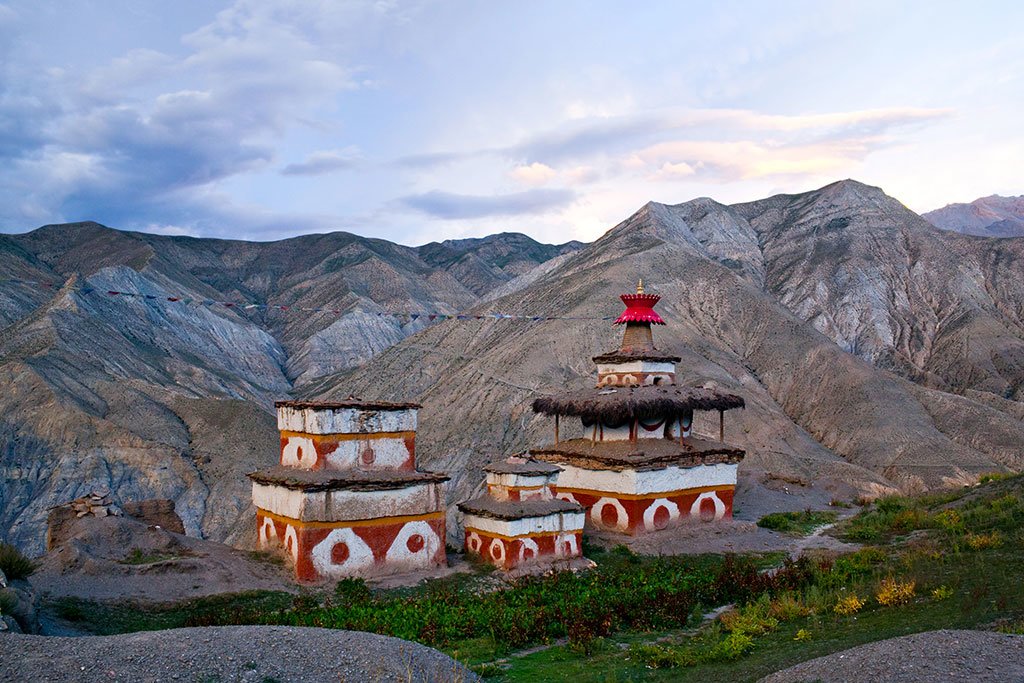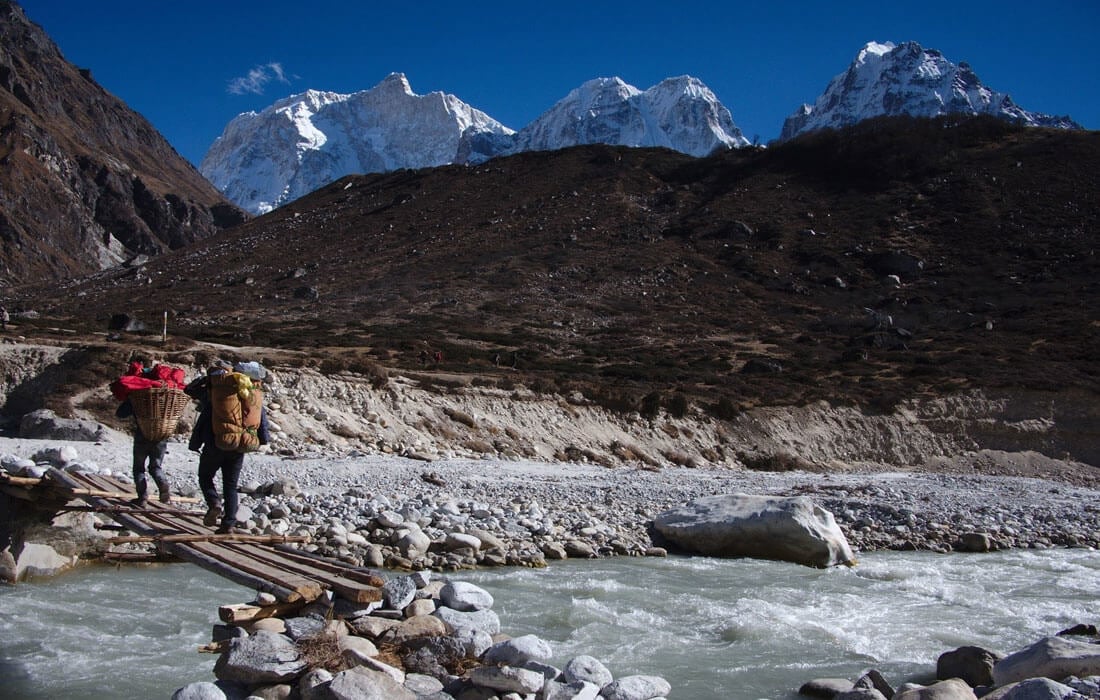 Detailed Information
Detailed Information
Visiting Kushmanda Sarowar and Triveni Dham offers a spiritual experience distinctly different from Nepal's mountain pilgrimages, one characterized by flowing waters, accessible ritual spaces, and the rhythmic pace of plains culture. What makes this site particularly special is the palpable sense of living tradition unlike some more commercialized religious destinations, Triveni Dham maintains an authentic atmosphere where everyday devotion takes precedence over tourism.
As you approach the complex from the main road, the landscape opens to reveal the broad expanse of the Narayani River, known further downstream in India as the Gandaki. The first view of the flowing waters creates an immediate sense of the site's importance, with the river itself commanding respect long before any human-built structures become visible. The road leads to a modest parking area from which the main shrines and bathing ghats can be reached by foot, allowing for a gradual transition from travel mode to a more contemplative state.
The heart of the experience at Triveni Dham is the sangam the actual confluence point where the three rivers meet. Depending on the season, this triangular meeting of waters creates visible differences in color and current, sometimes appearing as distinct flows before they fully merge. Local priests and religious guides often point out these distinctions, explaining their symbolic meanings in Hindu cosmology. During morning hours, the site comes alive with devotees performing ritual bathing, ancestral offerings, and sunrise prayers. The sound of mantras, ringing bells, and occasional devotional music creates an immersive auditory landscape that enhances the spiritual atmosphere.
The physical layout of Triveni Dham includes several key areas that visitors naturally flow between. The main bathing ghats consist of concrete steps leading down to the water, allowing safe access even during higher water levels. Nearby shrines dedicated to various deities particularly Lord Shiva, Vishnu, and forms of the Divine Mother provide spaces for worship after ritual bathing. Small pavilions offer shade for meditation or rest, often occupied by sadhus (holy men) who have made Triveni their temporary or permanent home. Simple food stalls and shops selling religious items line the approaches, providing necessary services without overwhelming the sacred atmosphere.
A short walk from the main confluence leads to Kushmanda Sarowar, a more recently developed component that complements the river-focused spirituality of Triveni. This artificial lake, surrounded by gardens and walking paths, offers a more controlled environment for ritual bathing, especially appreciated by elderly pilgrims or those visiting when river currents might be stronger. The lake area features a prominent temple dedicated to Goddess Kushmanda, with distinctive architecture that blends traditional and contemporary elements. The gardens surrounding the lake provide peaceful spaces for contemplation, with benches placed strategically to capture views of both the water and the distant hills on clear days.
Throughout the year, the atmosphere at Triveni Dham shifts with seasonal changes and religious calendars. During major festivals like Maghe Sankranti, the normally peaceful site transforms into a vibrant gathering of thousands, with expanded markets, religious performances, and continuous ceremonies at the ghats. Even on ordinary days, the daily rhythm creates distinctive experiences: early mornings bring serious devotees performing detailed rituals, middays see local families and casual visitors, while evenings often feature aarti (light offerings) ceremonies that illuminate the water's surface with floating oil lamps.
The natural environment adds another dimension to the Triveni experience. Watching river dolphins occasionally surface in the Narayani, spotting diverse birdlife along the shores, or simply observing the play of changing light on flowing water connects visitors to the natural processes that have made river confluences sacred across South Asian traditions. This blending of natural wonder and human devotion creates a multifaceted experience that remains authentic and accessible, a living spiritual tradition rather than merely a preserved historical site.
Visiting Kushmanda Sarowar and Triveni Dham offers a spiritual experience distinctly different from Nepal's mountain pilgrimages, one characterized by flowing waters, accessible ritual spaces, and the rhythmic pace of plains culture. What makes this site particularly special is the palpable sense of living tradition unlike some more commercialized religious destinations, Triveni Dham maintains an authentic atmosphere where everyday devotion takes precedence over tourism.
As you approach the complex from the main road, the landscape opens to reveal the broad expanse of the Narayani River, known further downstream in India as the Gandaki. The first view of the flowing waters creates an immediate sense of the site's importance, with the river itself commanding respect long before any human-built structures become visible. The road leads to a modest parking area from which the main shrines and bathing ghats can be reached by foot, allowing for a gradual transition from travel mode to a more contemplative state.
The heart of the experience at Triveni Dham is the sangam the actual confluence point where the three rivers meet. Depending on the season, this triangular meeting of waters creates visible differences in color and current, sometimes appearing as distinct flows before they fully merge. Local priests and religious guides often point out these distinctions, explaining their symbolic meanings in Hindu cosmology. During morning hours, the site comes alive with devotees performing ritual bathing, ancestral offerings, and sunrise prayers. The sound of mantras, ringing bells, and occasional devotional music creates an immersive auditory landscape that enhances the spiritual atmosphere.
The physical layout of Triveni Dham includes several key areas that visitors naturally flow between. The main bathing ghats consist of concrete steps leading down to the water, allowing safe access even during higher water levels. Nearby shrines dedicated to various deities particularly Lord Shiva, Vishnu, and forms of the Divine Mother provide spaces for worship after ritual bathing. Small pavilions offer shade for meditation or rest, often occupied by sadhus (holy men) who have made Triveni their temporary or permanent home. Simple food stalls and shops selling religious items line the approaches, providing necessary services without overwhelming the sacred atmosphere.
A short walk from the main confluence leads to Kushmanda Sarowar, a more recently developed component that complements the river-focused spirituality of Triveni. This artificial lake, surrounded by gardens and walking paths, offers a more controlled environment for ritual bathing, especially appreciated by elderly pilgrims or those visiting when river currents might be stronger. The lake area features a prominent temple dedicated to Goddess Kushmanda, with distinctive architecture that blends traditional and contemporary elements. The gardens surrounding the lake provide peaceful spaces for contemplation, with benches placed strategically to capture views of both the water and the distant hills on clear days.
Throughout the year, the atmosphere at Triveni Dham shifts with seasonal changes and religious calendars. During major festivals like Maghe Sankranti, the normally peaceful site transforms into a vibrant gathering of thousands, with expanded markets, religious performances, and continuous ceremonies at the ghats. Even on ordinary days, the daily rhythm creates distinctive experiences: early mornings bring serious devotees performing detailed rituals, middays see local families and casual visitors, while evenings often feature aarti (light offerings) ceremonies that illuminate the water's surface with floating oil lamps.
The natural environment adds another dimension to the Triveni experience. Watching river dolphins occasionally surface in the Narayani, spotting diverse birdlife along the shores, or simply observing the play of changing light on flowing water connects visitors to the natural processes that have made river confluences sacred across South Asian traditions. This blending of natural wonder and human devotion creates a multifaceted experience that remains authentic and accessible, a living spiritual tradition rather than merely a preserved historical site.

From $0
Price Varies from Group Size
Success
Here goes about why the success toast occurred.
 Activity Outline
Activity Outline
Sunrise at the Sangam
Main Temple Complex
Kushmanda Sarowar
Community Forest and Birdwatching
Cultural Center and Historical Exhibits
Boat Excursion to Confluence Point
Evening Rituals and Sunset
Local Cuisine Experience
 Good to Know
Good to Know
The convergence of three rivers creates unpredictable currents; even experienced swimmers should avoid entering deep water areas, particularly during monsoon season when river levels rise significantly.
Cultural Highlights
Maghe Sankranti Festival: Major celebration in January marking the sun's transition into Capricorn with ritual bathing and feasting
Chaitra Dashain: Spring festival featuring special river ceremonies and community gatherings
Tharu Influences: Elements of indigenous Tharu culture visible in local artistic styles and ritual accessories
Cross-Border Spirituality: Important site for devotees from both Nepal and India, demonstrating shared cultural heritage
Traditional Healing: Some visitors come specifically for water-based healing traditions believed to address various ailments
Visitor Etiquette
- Dress modestly when visiting temples and bathing areas (shoulders and knees covered)
- Remove shoes before entering temple sanctums
- Ask permission before photographing people during their rituals
- Avoid touching offerings that others have placed at shrines
- If observing rituals at the ghats, maintain a respectful distance
- Non-Hindu visitors should not enter the water at ritual bathing spots during ceremonies
- Temple donation boxes provide appropriate ways to support site maintenance
Nearby Attractions
Chitwan National Park: World-renowned wildlife sanctuary (2-hour drive)
Lumbini: Birthplace of Lord Buddha with numerous monasteries (1.5-hour drive)
Palpa/Tansen: Historic hill town with Newari architecture (2.5-hour drive)
Devghat: Another important river confluence with temples (3-hour drive)
Valmiki Ashram: Ancient hermitage associated with the author of Ramayana (30-minute drive)
 Reviews
Reviews
 FAQs (Frequently Asked Questions)
FAQs (Frequently Asked Questions)
Your queries are answered.
When is the best time to visit Kushmanda Sarowar and Triveni Dham?
The ideal visiting period is from October to March when the weather is pleasant and water levels are manageable. December-January offers the clearest skies but cooler temperatures, while October-November and February-March provide warmer conditions. The monsoon season (June-September) brings heavy rainfall that can cause high river levels and occasionally flooding, making some areas inaccessible. If interested in festivals, plan around Maghe Sankranti in mid-January or Chaitra Dashain in spring when the site hosts vibrant celebrations.
How do I get to Triveni Dham from major cities in Nepal?
From Kathmandu, the journey takes approximately 7-8 hours by road (190 km). Most visitors first travel to either Butwal (75 km from Triveni) or Bhairahawa (85 km), which can be reached by regular tourist buses or domestic flights. From these cities, local buses run to Triveni Susta, or taxis can be hired for more comfortable transport. From Pokhara, the journey to Butwal takes approximately 4-5 hours, followed by the connection to Triveni. Many visitors combine Triveni with trips to nearby attractions like Lumbini or Chitwan National Park.
Are there accommodation options directly at Triveni Dham?
Accommodation at Triveni itself is limited to basic pilgrim rest houses (dharamshalas) that offer simple rooms with minimal amenities, primarily catering to religious visitors rather than tourists. For more comfortable accommodations with modern facilities, staying in Butwal or Bhairahawa is recommended, with a day trip to Triveni. Those wishing to experience early morning activities at the site might consider the pilgrim lodgings for authenticity, though expectations should be adjusted accordingly regarding comfort and services.
What should I bring for a visit to Triveni Dham?
Essential items include modest clothing that covers shoulders and knees (required for temple areas), comfortable walking shoes, a hat and sunscreen for sun protection, and a water bottle. If planning to participate in any riverside rituals, bring a small towel and a change of clothes. A small donation for temples is customary. Photography enthusiasts should bring their equipment, as the site offers beautiful opportunities, especially during morning and evening light. Binoculars are useful for birdwatching in the surrounding wetlands.
Is Triveni Dham suitable for non-Hindu visitors?
Absolutely. While Triveni holds specific religious significance for Hindus, the site welcomes respectful visitors of all backgrounds interested in cultural and spiritual traditions. Non-Hindu visitors can observe ceremonies, explore the temples and natural areas, and appreciate the cultural significance without participating in specific religious rituals. Local guides can provide appropriate context and guidance on respectful behavior. The site offers valuable insights into Nepal's religious traditions beyond the more internationally known Buddhist sites.
Are there any special ceremonies visitors can observe or participate in?
Visitors can observe daily morning and evening aarti (light offering) ceremonies at the main temples, which typically occur around sunrise and sunset. Those interested in deeper participation can arrange through local priests for simplified versions of traditional offerings suitable for visitors. During major festivals, especially Maghe Sankranti in January, numerous special ceremonies take place throughout the day. While some rituals are restricted to practicing Hindus, many aspects of the spiritual life at Triveni are accessible to respectful observers.
What other nearby destinations pair well with a visit to Triveni Dham?
Triveni Dham's location makes it ideal for inclusion in broader itineraries exploring Nepal's southern regions. Lumbini, the birthplace of Buddha with its international Buddhist complexes, is only 1.5 hours away. Chitwan National Park, offering wildlife safaris and nature experiences, can be reached in approximately 2 hours. The historic hill town of Tansen (Palpa) provides a contrasting landscape and cultural experience 2.5 hours away. For those interested in religious circuits, Devghat (another important confluence) and various Gandaki River sites create meaningful connections.




